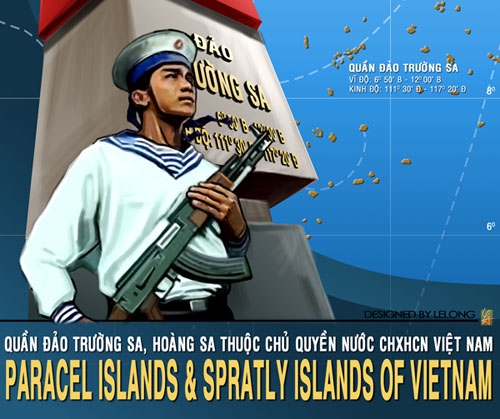
This article was originally published by RSIS on 27 August, 2014.
In their joint RSIS Commentary entitled “South China Sea Disputes: China has evidence of Historical Claims”, Dr Li Dexia and researcher Tan Keng Tat asserted that “China’s territorial claim is based on centuries of verifiable historical records, long-term use, treaties, international/customary laws plus records from the prodigious sea voyages of the Yuan and Ming dynasties”. I argue, however, that these evidences are unconvincing in the framework of international law.
In the process of advancing its hegemonic ambitions in the South China Sea, China has always sought to use international law as the basis for its claims of sovereignty, sovereign rights and jurisdiction in the waters within its U-shaped line. Yang Jiechi, China’s former foreign minister once told US Secretary of State Hillary Clinton that there is “plenty of historical and jurisprudence evidence to show that China has sovereignty over the islands in the SCS and the adjacent waters”.
China’s “historical evidence”
However, as Professor Mohan Malik from the Centre for Security Studies (Honolulu) noted in the World Affairs Journal, the vast majority of international legal experts have concluded that China’s claim to historic title over the South China Sea, implying full sovereign authority and the need for consent by other states to transit, is invalid.
In his visit to Germany in March 2014, Chinese President Xi Jinping was given an antique map as a gift by German Chancellor Angela Merkel. This was a 1735 map of China made by French cartographer Jean-Baptiste Bourguignon d’Anville and printed by a German publishing house. The map was based on earlier geographical surveys done by Jesuit missionaries in China and represented the “summation of European knowledge on China in the 18th-century”.
The map showed, according to its original Latin caption, the so-called “China Proper” – that is, the Chinese heartland mostly populated by ethnic Han people, without some minorities such as Mongolia, or Manchuria. The island of Hainan – the southern-most part of modern China – is shown with a different colour border. Of course, there were no signs of the Paracel or Spratly archipelagoes in this map.
Professor Mohan Malik pointed out that, China’s present borders largely reflect the frontiers established during the spectacular 18th-century Qing (Manchu) expansionism, which over time hardened into fixed national boundaries following the imposition of the Westphalian nation-state system over Asia in the nineteenth and twentieth centuries.
Now ten-dash line?
Dr Li and Mr Tan asserted that “Chinese records also named the Paracels as Chi-chou yang shan, referring to the nine western islets of the Paracels. During the late Qing dynasty, the name Xisha islands became common” and that, “one of the earliest Chinese references to today’s Xisha (Paracels) is the ‘Chu Fan Chi’ a 13th century book”. Actually, in the Manchu or Qing dynasty maps, it is Hainan Island, not the Paracel and Spratly Islands, that is depicted as China’s southern-most border.
Furthermore, China’s so-called “historic claims” to the South China Sea are actually not “centuries old”. Historical documents demonstrate that they only go back to 1947, when Chiang Kai-shek’s nationalist government drew the so-called “eleven-dash line” on Chinese maps of the South China Sea, enclosing the Spratly Islands and other chains that the ruling Kuomintang party declared were now under Chinese sovereignty.
Following the victory of the Chinese Communist Party in the civil war in 1949, the People’s Republic of China adopted this cartographic coup, revising Chiang’s notion into a “nine-dash line” after erasing two dashes in the Gulf of Tonkin in 1953. Most recently, China drew the new map to show its claim over the South China by marking a “ten-dash line” around the region just off the coasts of Vietnam, Malaysia, Brunei, and the Philippines’ island of Luzon. From the legal aspects, statements about the basis in law and China’s respect for international law in the South China Sea dispute seem to merely exist in words. What China claims (from eleven, to nine and ten-dash lines) remain vague and lacks legal basis.
Vietnam’s position on South China Sea
For its part, Vietnam has full historical and legal evidences to prove that the Vietnamese states of the past have claimed sovereignty over Hoang Sa (Paracel) and Truong Sa (Spratly) archipelagoes. The ancient documents such as official references, maps, books and the sovereignty steles were collected and exhibited; they have clearly asserted that Hoang Sa and Truong Sa belong to Vietnam.
Many of them are Chinese ancient maps, including a map issued by China and Japan in 1947 showing that China’s southern-most part to be Hainan Island.
For a long time, tiny islands in both Hoang Sa and Truong Sa archipelagoes were only known as extremely dangerous sites for navigators or shelters for fishermen in the region. In the early 17th century, the Vietnamese dynasties (Nguyen and Tay Son) were the first to exercise state functions over these uninhabited and distant islands.
In the 1920s to1930s, France, which had represented the Vietnamese Kingdom in foreign affairs since 1884, deployed permanent troops to Hoang Sa and Truong Sa. Vietnam has exercised administrative management over these archipelagoes in a continual manner without any dispute until China used force to occupy Hoang Sa and a part of Truong Sa in 1974 and 1988 respectively.
For more information on issues and events that shape our world, please visit ISN Security Watch or browse our resources.
Nguyen Huu Tuc is a research analyst from Vietnam and postgraduate student on International Relations at the S. Rajaratnam School of International Studies (RSIS), Nanyang Technological University.

